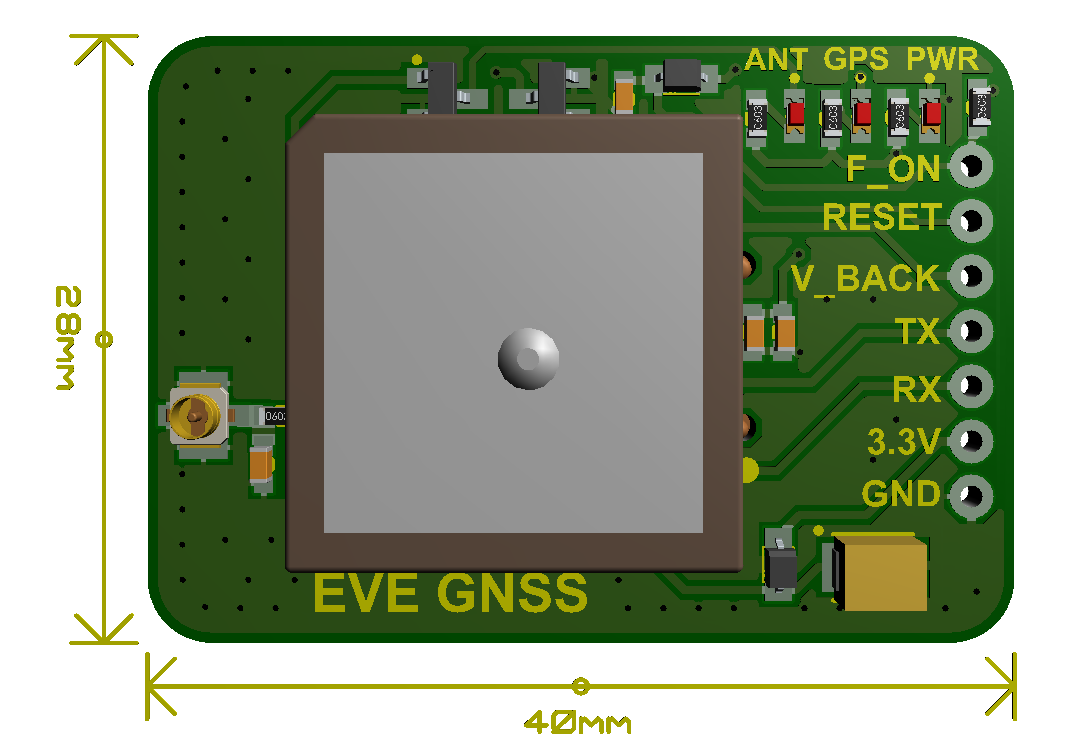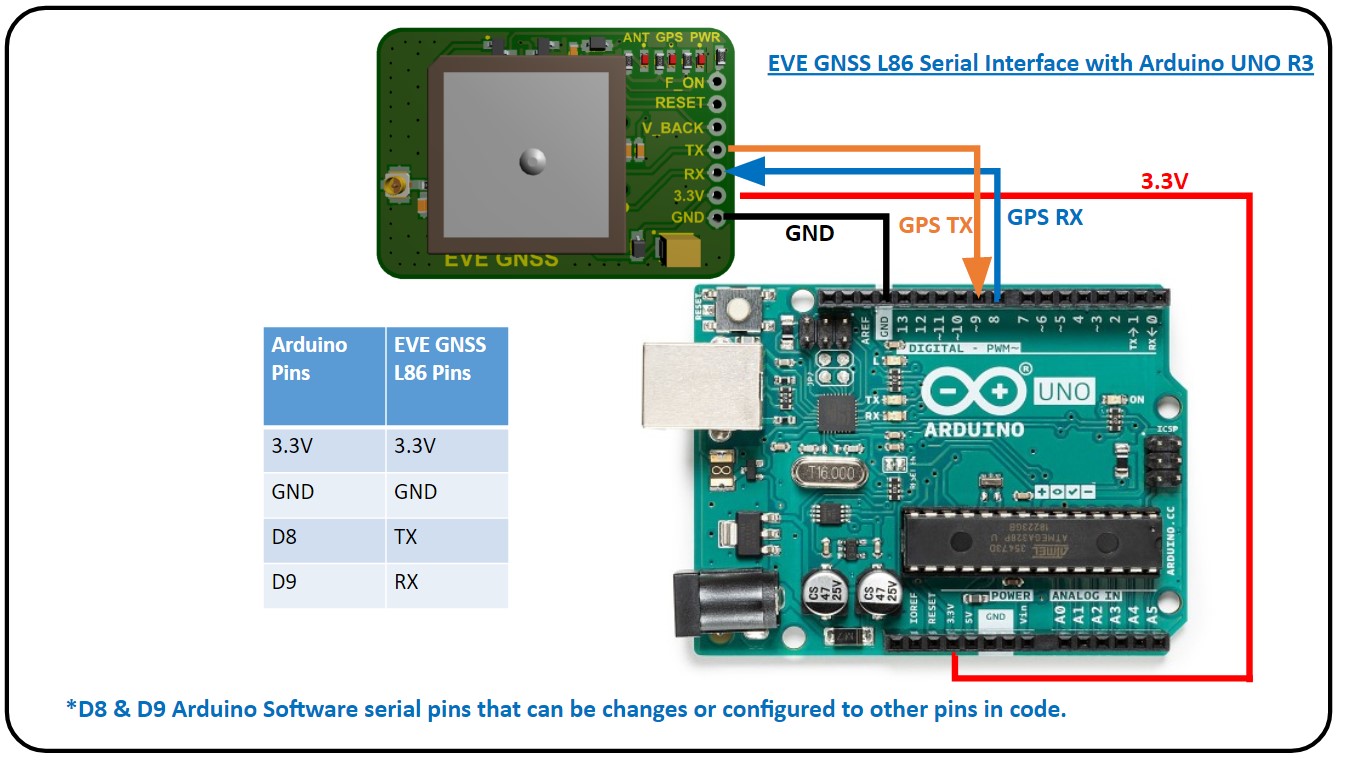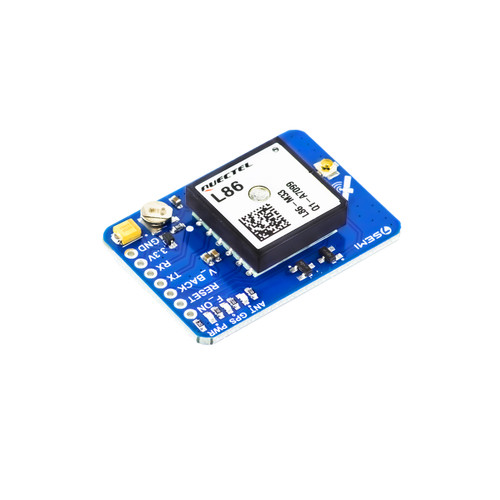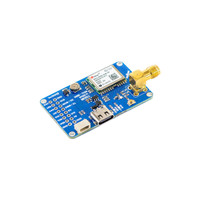The revolutionary L86-M33 GPS GNSS Breakout Board stands as a groundbreaking solution for individuals seeking precise location data. This cutting-edge GPS module boasts advanced positioning technology, delivering unparalleled accuracy and dependability. Its versatile design, coupled with high performance, makes it an optimal selection for a diverse array of applications, including drones, robotics, navigation systems, and more. The compact and user-friendly L86-M33 GPS GNSS Breakout Board ensures ease of use while providing robust GNSS reception for accurate location data, even in challenging environments. Whether you're a seasoned professional engineer or an enthusiastic hobbyist, this breakout board serves as the ultimate answer to all your location tracking requirements.
This breakout board seamlessly incorporates Quectel's L86, an ultra-compact GNSS module featuring an 18.4x18.4x4.0mm patch antenna and an external antenna connector. Powered by MediaTek's cutting-edge GNSS MT3333 chip, the board functions on a 3.3V power supply and communicates with the target MCU through the UART interface (TX, RX, FON, RESET pins). Additionally, it offers a V_BACK connection pin for a backup power supply.
Employing advanced AGPS (EASY) orbit prediction technology and power-saving mode (AlwaysLocate technology), the L86 module achieves superior performance while adhering to industry standards. The EASY technology allows automatic calculation and prediction of orbit information for up to three days, stored in internal RAM memory, facilitating low-power fast positioning, even in weak indoor signals. The implementation of AlwaysLocate technology enables the L86 to autonomously adjust positioning time based on environmental conditions and operating modes, significantly reducing module power consumption while ensuring positioning accuracy.
The L86 boasts intelligent antenna plug-in detection and short-circuit protection. It supports seamless automatic switching between the built-in patch antenna and the external active antenna, ensuring continuous positioning during the transition process.
Tailored for automotive, personal tracking, industrial-grade PDA, GPS receivers, and OBD applications, the L86-M33 GPS GNSS Breakout Board stands out as a particularly apt choice.
- The board uses a 3.3V power supply only
- UART communication interface
- Support multiple satellite systems: GPS, GLONASS, Galileo and QZSS
- Internal patch antenna: 18.4mm x 18.4mm x 4.0mm
- Support internal and external antenna automatic switching
- Support short circuit protection and antenna detection
- Built-in low-noise amplifier to improve receiving high sensitivity
- Support self-assisted AGPS (EASY TM technology, no external memory required)
- Very low current consumption: 26mA @tracking mode
- Multiple power saving modes: standby Mode, Backup Mode, Periodic Mode, AlwaysLocate Mode
- LOCUS technology, support automatic log information recording and storage
- High sensitivity: -167dBm@tracking mode, -149dBm@acquisition mode
- Number of channels: 99 capture channels, 33 tracking channels
- Support Balloon mode, positioning altitude up to 80km
- Support DGPS, SBAS (WAAS/EGNOS/MSAS/GAGAN)
- Multi-frequency active interference cancellation technology to enhance anti-interference ability
- Time service supports PPS and NMEA synchronization function
- Support the SDK commands independently developed by Quectel
- L86 GNSS Breakout Manual
- Quectel L86 GNSS Specification
- Quectel L86 Hardware Design
- Quectel Android GNSS Driver User Guide
- Quectel GNSS DGPS RTCM Test Guide
- Quectel GNSS FOTA User Guide
- Quectel GNSS Patch Antenna Module Design Guide
- Quectel GNSS SDK Commands Manual
- QCOM_V1.6 for Windows
- QFlash_V4.19_EN for Windows
- Qnavigator_V1.6.9.1 for Windows
Board Dimensions

L86-M33GNSS Breakout Arduino Connection

Arduino Code for GPS Read
#include <SoftwareSerial.h> // Include the SoftwareSerial library
#define ARDUINO_GPS_RX 9 // Arduino RX pin connected to GPS TX
#define ARDUINO_GPS_TX 8 // Arduino TX pin connected to GPS RX
#define GPS_BAUD_RATE 9600 // The GPS Shield module defaults to 9600 baud
// Create a SoftwareSerial object called gps:
SoftwareSerial gpsPort(ARDUINO_GPS_TX, ARDUINO_GPS_RX);
// This is the hardware serial port on pins 0/1.
#define SerialMonitor Serial
void setup()
{
gpsPort.begin(GPS_BAUD_RATE);
SerialMonitor.begin(9600);
}
void loop()
{
if (gpsPort.available()) // If GPS data is available
SerialMonitor.write(gpsPort.read()); // Read it and print to SerialMonitor
if (SerialMonitor.available()) // If SerialMonitor data is available
gpsPort.write(SerialMonitor.read()); // Read it and send to GPS
}








